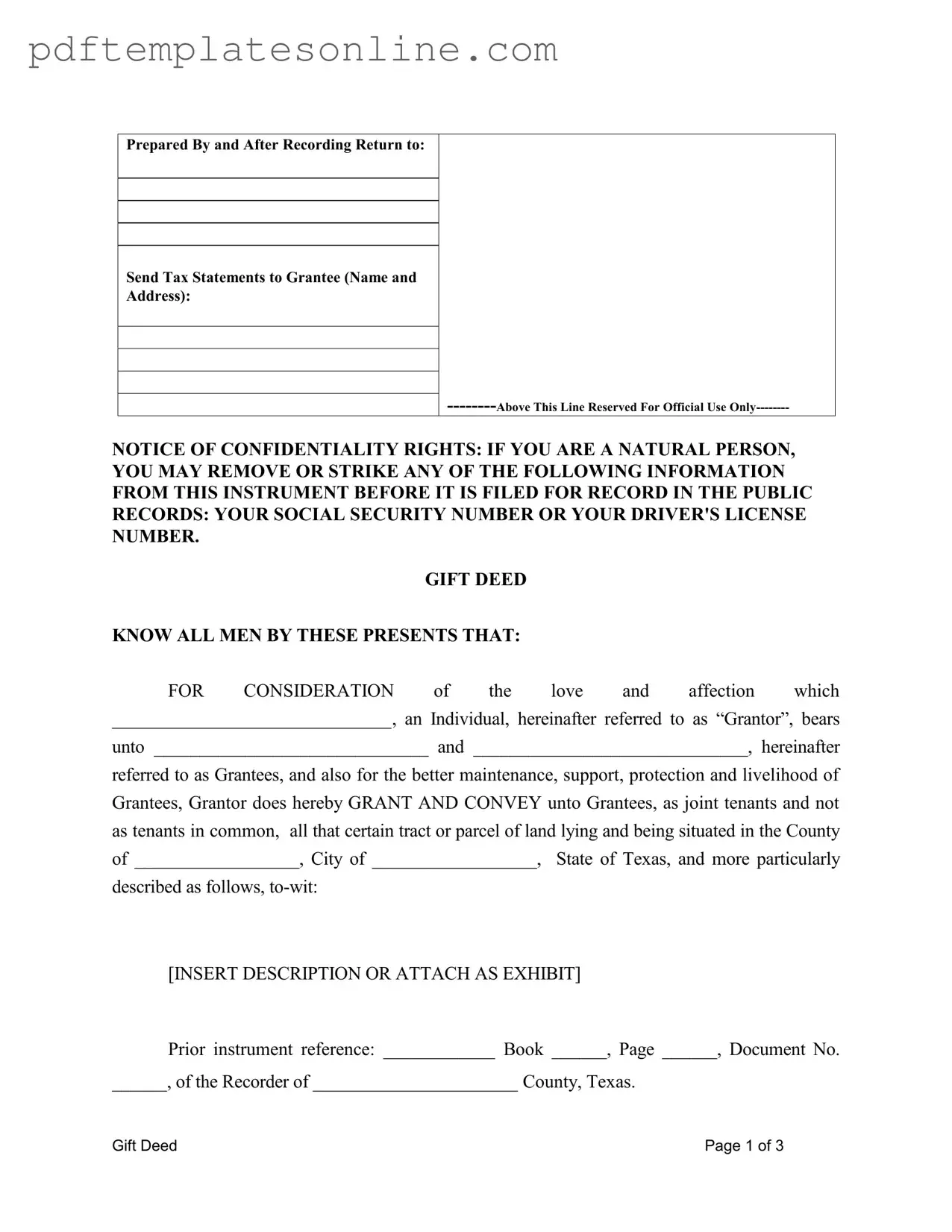Blank Gift Deed Texas Form
A Gift Deed in Texas is a legal document used to transfer property from one person, known as the Grantor, to another, referred to as the Grantee, without any exchange of money. This form captures the intention of the Grantor to convey their property out of love and affection, establishing joint tenancy with rights of survivorship. It is essential to understand the implications of this deed, as it affects ownership rights and responsibilities.
Access Gift Deed Texas Editor Now
